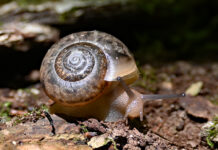To celebrate the 400th anniversary of the discovery of America by Christopher Columbus, the U.S. Congress authorized, in 1890, a huge “Columbian Exposition” to begin in October of 1892.
After much politicking, Chicago was chosen as the location for the event and Jackson Park, an unimproved area in southeastern Chicago along Lake Michigan, was chosen for the site. Ground was broken on Jan. 27, 1891, and two years later, on May 1, 1893, after many trials, tribulations and disagreements, President Grover Cleveland opened the grand exposition with much pomp, ceremony and oratory.
The purpose of the expo, usually called “The World’s Fair,” or just “The Fair,” was to demonstrate “arts, industries, manufactures, and the products of the soil, mine, and sea,” so a big feature of the show was the elaborate displays put on by the various farm equipment manufacturers.
John Deere role
Deere & Company was heavily involved, with Charles Deere being appointed one of the two fair commissioners from Illinois, while the secretary of the expo was Benjamin Butterworth, Commissioner of Patents in Washington, D.C., and the father of Deere president William Butterworth.
In the Agricultural Building, Deere occupied a prime spot between Oliver and the Syracuse Chilled Plow Company, which had not yet been acquired by Deere. President Butterworth himself was to be found as part of the crew manning the exhibit, which consisted of walking, sulky and gang plows, several cultivators, and a combined disc lister and drill. Several grading plows for railroad and road construction were shown in the Transportation Building by Deere, while in the main hall of the Illinois Building, Deere displayed both old and new plows to show their progression through the years.
The Deere Company had apparently amassed a collection of foreign-built plows and cultivators, including some very primitive examples, and these were on exhibit in the U.S. Patent Office display, along with new John Deere plows to “indicate how far in advance of other nations our own country stands today in the perfection of agricultural tools.”
Liberty Bell leftovers
Before the fair began, the Daughters of the American Revolution formed the Liberty Bell Society to make a replica of the original Liberty Bell for display at the event. The DAR published a public plea for donations of patriotic artifacts to be used in the replica’s construction. Coins, jewelry, bayonets and swords in huge numbers, as well as other artifacts poured in, so much in fact, that a lot was left over after the bell was cast. What to do with it?
Someone had the idea to “turn the swords into a plowshare,” and the Liberty Bell Committee contacted the American Agriculturist to recommend five leading plow manufacturers who might take on the job. When Deere was contacted, they immediately leaped at the chance to build the plow, even offering to do it for free.
Peace plow
The “Columbian Peace Plow” was “a perfect type of the most improved plow of today,” and was constructed from more than 22,000 wood and metal relics donated by the public. Other pieces of wood came from old Fort Duquesne, the original floor of Independence Hall, the Ranger, a ship commanded by John Paul Jones during the Revolution, William Penn’s house in Philadelphia, the house, also in Philadelphia, in which Jefferson penned the Declaration of Independence, and the house in which George Washington once lived in Washington City.
There was also wood from the sill of Abe Lincoln’s Springfield, Illinois, home and a chunk of an apple tree grown from seed purported to have been brought over on the Mayflower.
Quick work
The project did put Deere & Company into a bind, as the official invitation to build the plow didn’t come until April 1, 1893, just one month before the Fair was scheduled to open. However, Deere set to work immediately and hired Charles Borg, a Swedish immigrant who had come to the area in 1881 to build the plow.
Borg, who in 1903 partnered with Marshall Beck to establish a company to make automotive clutches (today’s BorgWarner Inc.), was a skillful carpenter and cabinet maker before coming to the attention of Deere, who hired him as a pattern maker at Deere & Mansur. He left there and began his own business, building woodworking machinery and it was apparently from there that Deere hired him in 1893.
Wooden inlays
Borg made a wooden plow beam and, using the various bits of donated wood, he created 24 inlays on the beam, representing such designs as arrows, flowers, starbursts and, of course, a leaping deer on each side. The metal plow standard was covered in fancy striping and the share and moldboard were highly polished.
Ginormous wagon
Another exhibit with strong ties to Deere & Company was the “Largest Wagon in the World” built by the Moline Wagon Company. This giant three-box farm wagon was 42 feet long (including the tongue the box was 21 feet long and 6 1/2 feet wide and could hold a reported 640 bushels of small grain), and measured 16 feet high (to top of seat), while the rear wheels were said to be 9 1/2 feet in diameter and the fronts 7 1/2 feet.
If Deere didn’t at the time own the Moline Wagon Company, it had been selling their products for several years and finally bought the firm in 1910. It’s not likely that Deere & Company, obsessed as most corporations are with the bottom line and Wall Street expectations, would spend the money to make something like the peace plow today.












